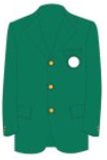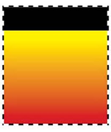IP Issues Prompted by the COVID-19 Pandemic
The novel coronavirus COVID-19 pandemic has left intellectual property (IP) attorneys and their clients in an uncharted legal territory as quarantines are imposed and offices closed. Most filing and prosecution of patent, trademark, and copyright applications should keep running smoothly for now, however, because almost all of that work is done online and most IP attorneys (like Stradley Ronon’s IP Practice Group) are fully operational remotely. Nevertheless, the various IP offices around the world have announced measures to grant leeway in these exigent circumstances from certain requirements. Some of the measures implemented by the U.S. Patent and Trademark Office and the U.S. Copyright Office are summarized below. Moreover, although the use of the measures may be unnecessary yet, that could change if attorneys, corporate clients, or inventors were to become seriously ill with the virus or the internet and computer systems become disrupted as the crisis progresses.
- The U.S. Patent and Trademark Office (USPTO)
The USPTO considers the pandemic to be an “extraordinary situation” within the meaning of 37 C.F.R § 1.183 for affected patent and trademark applicants, patent and trademark owners, and reexamination parties. Therefore, the USPTO has eased the burden created by deadlines for parties affected by the pandemic. In accordance with the temporary authority provided by the Coronavirus Aid, Relief, and Economic Security Act (CARES Act) signed by President Trump on March 27, the USPTO has extended the time to file certain patent and trademark-related documents and to pay certain required fees, which otherwise would have been due between March 27 and May 31, to June 1, 2020, for parties who are unable to meet deadlines due to the pandemic. This most recent extension is in addition to the prior extension the USPTO had announced on March 31, 2020.
With respect to patents, the USPTO gave notice that it will waive the petition fee normally required with any petition to revive an abandoned application or the termination or limitation of a reexamination proceeding when the pandemic caused a missed deadline on or before May 31, 2020. The waiver likewise applies to those whose trademark applications were abandoned or whose registrations were canceled or expired based on missed deadlines. Petitions to revive an abandoned application or reinstate a canceled or expired registration “must include a statement explaining how the failure to respond to the Office communication was due to the effects of the Coronavirus outbreak.” As with any representation made to the USPTO, we recommend that the applicant, practitioner, or inventor maintain evidence supporting the representation.
The USPTO has also waived the requirements for an original handwritten signature for certain correspondence and for certain payments by credit card. And, not surprisingly, the USPTO has announced that it will no longer hold face-to-face meetings until further notice, including Patent Trial and Appeal Board hearings, but will continue with phone and videoconferences. Finally, the USPTO has announced several new initiatives to help inventors of COVID-19-related patent applications.
One initiative is called the COVID-19 Prioritized Examination Pilot Program. To qualify for the new program, the claims of an application must cover a product or process that is subject to U.S. Food and Drug Administration (FDA) approval for use in the prevention and/or treatment of COVID-19. The USPTO will grant requests for prioritized examination to patent applicants that qualify for small or micro entity status without payment of the typical fees associated with other prioritized examination. In addition, the USPTO will endeavor to reach the final disposition of applications in this program within six months if applicants respond promptly to communications from the USPTO. The USPTO hopes that accelerating examination of COVID-19-related patent applications, without additional fees, will permit such innovators to bring important and possibly life-saving treatments to market more quickly.
Another initiative is a new web-based patent marketplace platform, called “Patents 4 Partnerships.” This platform is intended to provide the public with a user-friendly, searchable repository of patents and published patent applications that are both related to the COVID-19 pandemic and available for licensing. Implementing still another initiative, the USPTO will temporarily permit the filing of plant patent applications and follow-on documents via the USPTO patent electronic filing systems (EFS-Web or Patent Center) until further notice.
For additional guidance and updates, see the USPTO website at www.uspto.gov.
- The U.S. Copyright Office
Citing the pandemic, and in conjunction with the authority granted in Section 710 of the Copyright Act, which was added by the CARES Act, the U.S. Copyright Office has implemented temporary rules addressing electronic applications for copyright registration that need to be processed quickly. The temporary rules for “special handling” of applications were prompted by the Copyright Office’s decision to close the Library of Congress buildings to the public and switch to a telework arrangement. Under the temporary rules, applicants who file their applications online can submit an electronic deposit of their work if a physical version is required with the applications. Examiners working remotely will then review the applications within five business days. The electronic deposit, which does not replace the physical requirement, must include a declaration or statement certifying that it has the same content as the physical one. As for electronic applications that do not require physical deposits of the work, the U.S. Copyright Office announced that those applications would continue to be examined within five business days by the teleworking examiners.
As a general matter, an applicant’s ability to obtain statutory damages and attorney fees is enhanced if the applicant files for registration within three months of a work’s first publication. Under Section 710 of the Copyright Act, the Copyright Office has extended this deadline under limited circumstances. The Copyright Office further made changes for serving and recording notices of termination, which permit authors or their heirs to terminate under certain circumstances the exclusive or nonexclusive grant of a transfer or license of an author’s copyright in a work or of any right under a copyright, to the extent the parties are negatively impacted and are unable to comply due to the COVID-19 emergency. The Copyright Office still further expanded its capabilities to receive electronic submissions for certain services. Specifically, for applicants who are unable to send physical mail during the pandemic, the Copyright Office will accept submissions by email for filing notices of termination for recordation, requests for reconsideration of refusals to register, and requests for removal of personally identifiable information from the public record.
The U.S. Copyright Office cautioned, “These measures are exceptional in nature and temporary in duration, and are projected to terminate when the library reopens its buildings to the public.” The U.S. Copyright Office provides helpful guidance about all things copyright on its website, www.copyright.gov.
____________________________________________________________________________
Color Me Green . . . Colors Become the Profitable Envy of Nontraditional Trademarks?
 A nontraditional trademark is a trademark that does not belong to a category that is typically thought of as a trademark, such as letters, numbers, words, logos, symbols, etc., but meets the requirements of a trademark, i.e., it is a brand source identifier used to distinguish goods or services of one source from those of another. Examples of nontraditional trademarks include shapes (McDonald’s golden arches), sounds (NBC chimes), scents (floral scents for sewing thread and yarn), textures (velvet textured covering on a bottle of wine), and colors (robins’ egg blue for Tiffany and Company’s catalog covers). The USPTO and the U.S. Court of Appeals for the Federal Circuit recently offered guidance with respect to one nontraditional trademark: color.
A nontraditional trademark is a trademark that does not belong to a category that is typically thought of as a trademark, such as letters, numbers, words, logos, symbols, etc., but meets the requirements of a trademark, i.e., it is a brand source identifier used to distinguish goods or services of one source from those of another. Examples of nontraditional trademarks include shapes (McDonald’s golden arches), sounds (NBC chimes), scents (floral scents for sewing thread and yarn), textures (velvet textured covering on a bottle of wine), and colors (robins’ egg blue for Tiffany and Company’s catalog covers). The USPTO and the U.S. Court of Appeals for the Federal Circuit recently offered guidance with respect to one nontraditional trademark: color.
A. Masters Tournament Green-Gold Jacket
Augusta National, Inc. (Augusta) filed Application Serial No. 88/310,303 to register a green jacket with gold buttons used in connection with (after amendment during the prosecution of the application) “Promotion of goods and services through sponsorship of sports events,” in International Class (IC) 35, and “Organizing and conducting golf tournaments,” in IC 41. Augusta filed the application with the USPTO on February 21, 2019, citing a first use date of April 1949.
On April 12, 2019, the USPTO initially refused registration of the mark as a non-distinctive product design because product designs can never be inherently distinctive. On May 8, 2019, the USPTO issued a second Office Action, superseding the first, and rejected the application as a non-distinctive trade dress that would not be perceived as a service mark but only as decoration or ornamentation. Augusta responded to the refusal asserting a claim that the mark has acquired distinctiveness under Trademark Act Section 1052(f), and providing proof of extensive third-party coverage and consumer recognition of the mark in connection with the relevant services. In response to the second Office Action, Augusta explained that the colors of the jacket had become a symbol for Augusta National to its membership in 1937 and provided recognition of the champion of the Masters Tournament since 1949 (the jacket is awarded to the winner of the golf tournament each year). Augusta submitted two hundred pages of exhibits to show the fame and recognition of the color of the green jacket. The USPTO accepted the arguments, and on March 3, 2020, Augusta secured U.S. Registration No. 6,000,045 for the colors of the green jacket.
Takeaway: Nontraditional trademarks, such as color, typically must be shown to have acquired distinctiveness to be registrable with the USPTO.

B. Is the Federal Circuit Color Blind?
Forney Industries, Inc. filed an application (Serial No. 86/269,096) seeking to register on the Principal Register a color mark (depicted above) as used on packaging for welding and machining goods. The application described the mark as follows: “The mark consists of a solid black stripe at the top. Below the solid black stripe is the color yellow, which fades into the color red. These colors are located on the packaging and or labels.” The application offered no proof of acquired distinctiveness (secondary meaning) despite Forney’s use of its multi-color mark on the packaging for about 30 years.
Affirming the Examining Attorney, the USPTO Trademark Trial and Appeal Board (TTAB) refused registration because “a color mark consisting of multiple colors applied to product packaging is not capable of being inherently distinctive.” The TTAB cited two U.S. Supreme Court decisions, Qualitex and Wal-Mart, and decided that packaging marks using color without defined borders or shape cannot be inherently distinctive. (Color in product packaging can be inherently distinctive if specific colors are used in combination with a well-defined shape, pattern, or other distinctive design.) The TTAB stated that such controlling precedent does not distinguish between color marks for products and color marks for product packaging; both require secondary meaning to be registrable.
In Qualitex Co. v. Jacobson Products Co., 514 U.S. 159 (1995), the Court stated: “over time, customers may come to treat a particular color on a product or its packaging . . . as signifying a brand. And, if so, that color would have come to identify and distinguish the goods -- i.e. to ‘indicate’ their ‘source’ -- much in the way that descriptive words on a product . . . can come to indicate a product’s origin.” The Court seemed to state that, as a rule, color marks on products or packaging require proof of secondary meaning to be protected. Later, in Wal-Mart Stores, Inc. v. Samara Brothers, Inc., 529 U.S. 205 (2000), the Court clarified its rule: “with respect to at least one category of mark -- colors -- we have held that no mark can ever be inherently distinctive.” The Court also stated: “In Qualitex, . . . [w]e held that a color could be protected as a trademark, but only upon a showing of secondary meaning.”
In In re Forney Indus., Inc., No. 19-1073 (Fed. Cir. April 8, 2020), the Federal Circuit overturned the USPTO’s refusal to register the trademark and remanded. Forney argued that the USPTO erred in finding “that a color mark can never be inherently distinctive in the trade dress context,” and that if it could, inherent distinctiveness required “a well-defined peripheral shape or border.” The Federal Circuit agreed with Forney, holding that “color marks can be inherently distinctive when used on product packaging, depending upon the character of the color design.” The Federal Circuit found that the TTAB’s decision overstated U.S. Supreme Court precedent. The court explained that U.S. Supreme Court precedent differentiates product packaging from product design and “does not support the [USPTO’s] conclusion.” Although “product design trade dress . . . can only qualify for protection through acquired distinctiveness,” the Federal Circuit held that “a distinct color-based product packaging mark can indicate the source of the goods to a consumer, and, therefore, can be inherently distinctive.” The court found no basis for the USPTO’s rule “that a multi-color mark must be associated with a specific peripheral shape in order to be inherently distinctive.”
To the extent the Forney decision is read to hold that color marks on product packaging can be inherently distinctive; it appears inconsistent with both Qualitex and Wal-Mart. Perhaps the Federal Circuit holding is narrower and supports only the principle that certain multi-color product packaging marks that are sufficiently definite can be inherently distinctive. Time will tell.
Takeaway: Meanwhile, and until and unless the U.S. Supreme Court advises otherwise, color trademarks can be protected immediately when used on product packaging. Proof of secondary meaning is not required. Because Federal Circuit precedent controls how the USPTO addresses applications to register marks, registrations for color marks used on product packaging should be easier to obtain. Therefore, Christian Louboutin should consider using and registering red shoeboxes in addition to the red shoe sole registrations already secured.
____________________________________________________________________________
IP Client Spotlight

Founded one year ago, Jaunt Air Mobility LLC (Jaunt) is a leader in the emerging business sector known as Advanced Air Mobility (AAM). Jaunt is building a world-class compound aircraft, a true combination of a helicopter and fixed-wing aircraft, and has developed a business model that addresses the AAM eco-system. Jaunt’s rapid rise in the global AAM market is due to the strength of Jaunt’s aircraft design, intellectual property portfolio, and experienced senior management. Jaunt was quickly named an Uber Elevate partner. The advanced propulsion design features Jaunt’s patented Reduced rotor Operating Speed Aircraft (ROSA™) technology. The aircraft operates with WhisperFly™ technology at a reduced noise level that is not only lower than fixed-wing aircraft and today’s helicopters but is acceptable to residential communities. The aircraft also offers the highest ride quality utilizing Jaunt’s LevelFly™ technology. Jaunt’s all-electric air vehicle has no combustible liquids, which eliminates fire hazards in the air and on the ground.
When Jaunt requires assistance with intellectual property matters, it turns to Stradley Ronon. Stradley Ronon’s IP attorneys have advanced degrees in aerospace engineering, have experience representing clients in the industry, and have worked closely with Jaunt’s CEO, Kaydon Stanzione, on patent matters for many years. Thus, Stradley Ronon is well-positioned to provide integral advice on key issues involving patents, trademarks, copyrights, trade secrets and other related areas. In addition, Stradley Ronon’s ever-growing knowledge of the aerospace industry, and how it affects Jaunt’s needs and goals, will undoubtedly serve both Stradley Ronon and Jaunt well. Stradley Ronon is proud to assist Jaunt in successfully navigating complex IP issues born from an ever-changing aerospace landscape.
Information contained in this publication should not be construed as legal advice or opinion or as a substitute for the advice of counsel. The articles by these authors may have first appeared in other publications. The content provided is for educational and informational purposes for the use of clients and others who may be interested in the subject matter. We recommend that readers seek specific advice from counsel about particular matters of interest.
Copyright © 2020 Stradley Ronon Stevens & Young, LLP. All rights reserved.